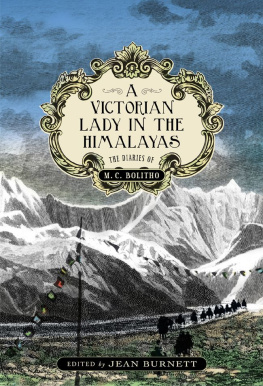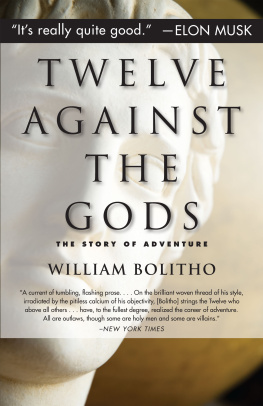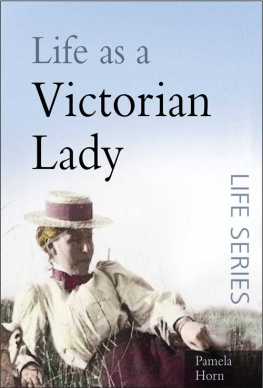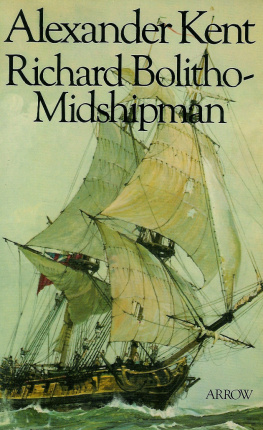MC Bolitho - A Victorian Lady in the Himalayas
Here you can read online MC Bolitho - A Victorian Lady in the Himalayas full text of the book (entire story) in english for free. Download pdf and epub, get meaning, cover and reviews about this ebook. year: 2017, publisher: Brown Dog Books, genre: Home and family. Description of the work, (preface) as well as reviews are available. Best literature library LitArk.com created for fans of good reading and offers a wide selection of genres:
Romance novel
Science fiction
Adventure
Detective
Science
History
Home and family
Prose
Art
Politics
Computer
Non-fiction
Religion
Business
Children
Humor
Choose a favorite category and find really read worthwhile books. Enjoy immersion in the world of imagination, feel the emotions of the characters or learn something new for yourself, make an fascinating discovery.
- Book:A Victorian Lady in the Himalayas
- Author:
- Publisher:Brown Dog Books
- Genre:
- Year:2017
- Rating:5 / 5
- Favourites:Add to favourites
- Your mark:
- 100
- 1
- 2
- 3
- 4
- 5
A Victorian Lady in the Himalayas: summary, description and annotation
We offer to read an annotation, description, summary or preface (depends on what the author of the book "A Victorian Lady in the Himalayas" wrote himself). If you haven't found the necessary information about the book — write in the comments, we will try to find it.
A Victorian Lady in the Himalayas — read online for free the complete book (whole text) full work
Below is the text of the book, divided by pages. System saving the place of the last page read, allows you to conveniently read the book "A Victorian Lady in the Himalayas" online for free, without having to search again every time where you left off. Put a bookmark, and you can go to the page where you finished reading at any time.
Font size:
Interval:
Bookmark:

A VICTORIAN
LADY IN THE
HIMALAYAS

A VICTORIAN
LADY IN THE
HIMALAYAS

M. C. Bolitho
Edited by Jean Burnett

#xa0;
Copyright Text Helen Bolitho; Introduction Jean Burnett 2017
The rights of Helen Bolitho and Jean Burnett to be identified as the authors of this work have been asserted in accordance with the Copyright, Designs & Patents Act 1988.
All rights reserved. No part of this book may be reproduced, stored in a retrieval system, or transmitted in any form or by any means, electronic, electrostatic, magnetic tape, mechanical, photocopying, recording or otherwise, without the written permission of the copyright holder.
Published under licence by Brown Dog Books and The Self-Publishing Partnership, 7 Green Park Station, Bath BA1 1JB
www.selfpublishingpartnership.co.uk
ISBN printed book: 978-1-78545-154-6
ISBN e-book: 978-1-78545-155-3
Cover design by Kevin Rylands
Internal design by Andrew Easton
Printed and bound by CPI Group (UK) Ltd, Croydon CR0 4YY

Contents
I NTRODUCTION

Maria Caroline Bolitho (Paget) 1850-1933
I wandered about the camp with a handful of matches, cautiously, so as not to take a header over a yak. Maria Caroline Bolithos insouciant description of checking a frozen campsite at 17,000 feet is typical of her throwaway style. Her diary of an intrepid journey on horseback from Kashmir to Ladakh over towering Himalayan passes is an undiscovered jewel.
Little is known about her, although she was one of the first women to be admitted as a fellow of the Royal Geographical Society (together with Gertrude Bell), in 1913. She came from a distinguished Cornish family Lord Lieutenants of that county. Her handwritten diary on small sheets of notepaper was unearthed from the attic by her descendant, Hilary Bolitho. Sadly, no photograph of Maria Caroline has come to light. We know only that she was tall and gaunt.
She shared with other distinguished women travellers of the Victorian era an enthusiasm and determination that made light of bodily discomfort. Undeterred by terrible conditions, deep snow and scarcely any food, she remained positive at all times.
I am not bothered by the altitude at all, she wrote, with evident glee. Her loyal travelling companion, referred to only as the other memsahib, suffered considerably, as did many of the local guides, porters, grooms and members of the party. One suspects that they may have regretted joining up with this eccentric and possibly insane European woman who wished to cross the high passes at the wrong time of year.
Miss Bolithos aim was to reach the town of Leh, the capital of Ladakh or Little Tibet, in order to witness the celebrated devil dances at the Buddhist monastery of Hemis. Few Westerners had seen this ceremony and fewer, if any, Western women. She and her companion were also able to enter the treasure room of the monastery which had been closed for many years. Her descriptions are vivid and detailed, the flora and fauna of the area are carefully noted, as well as the reactions of the people she meets.
Her descriptions of the local people are amusing and totally politically incorrect. Viewed from the vantage point of the Raj in 1896 locals are always natives, there is a constant search for coolies and bearers who often prove disappointing.
The costumes and ornaments of Ladakhi women are strange and described in detail. The women wear so many layers of clothing that they resemble small barrels. Neither men nor women ever change their clothes or wash. The smell in the houses is indescribable. Ladakhis are very ugly but cheerful and willing, unlike the handsome but surly Punjabis.
Miss Bolithos pony known as The Clipper, emerges as a character in his own right- highly temperamental and given to stamping on people. The yaks are also individuals, indispensable at the highest levels.
The journey was undertaken in 1896 when Miss Bolitho was forty six. She was no stranger to travel in remote areas. She had made an expedition to Burma on roads infested with bandits. An extract from the Burmese diary is included here. She had been to China where a visit to the Great Wall with her companion, Alice, the other memsahib, resulted in an attack by Boxers who subjected them to vile abuse.
On one expedition she reached the borders of Tibet which was at that time still forbidden to foreigners. Another journey was undertaken alone on horseback to the rhododendron country of Upper Sikkim. The beauty of the country rewarded her for the discomforts caused by leeches and incessant rain. We know that she visited Japan and spent time in India. In 1899 she married Henry Paget, Commissioner of Police at Calcutta.
Her obituary described her as an adventurous Cornishwoman with an irresistible desire to see for herself the less explored regions of the world.
If Miss Bolitho had written a book describing her adventures she would surely have taken her place among the well-known female travellers of her time. She was described as an entertaining speaker and writer of magazine articles about her travels, but little has survived.
This little book offers a flavour of her writing and a glimpse of a lost world. The modern traveller no longer struggles over the high Himalayan passes to reach Ladakh. A highway cuts through the mountains and the destination is very popular with the more adventurous backpacker and motor cyclist. Leh now has an airport, but the lamas and the monasteries still remain.
Jean Burnett
Bristol, January 2017
T HE J OURNEY TO L ADAKH

1. Kashmir
W e bought our ponies at Abbotabad and rode them via Mujaffarabad the 156 miles into Kashmir. At Srinagar we lived on a houseboat and spent most of the day on the river so the ponies had an easy time. They had an early morning scamper among the beautiful blue irises that line the banks of the Jhelum, then stayed the rest of the day in their cool stalls with a chenar tree for a roof and walls of chitai or matting. They little knew that the day would come when they would have to stand out in snow and bitter wind at over 16,000 feet without any shelter at all.
The other memsahibs pony was a bay mare of fourteen hands, the quietest, gentlest creature imaginable. She was perfectly sure-footed and when her rider preferred to go on foot, all that was necessary was to tie up the reins and let her follow my pony, which she would do for miles, picking her way over the roughest places.
My animal, Clipper was a dark brown polo pony a little over 13 hands. He was very handsome but had the greatest objection to being saddled or to anyone mounting him. He would whizz around, lashing out at anyone who came near. The day I left Abbotabad I managed to scramble into the saddle with the help of five men and some enticing carrots, and for a month after I had a daily battle with him but, at last, finding that I always got the best of it he gave up this little game and let me mount him when and where I liked without any assistance. It would have been very awkward for me if it had continued the fight, for more often than not the syces were miles behind and we had to get on and off by ourselves.
Font size:
Interval:
Bookmark:
Similar books «A Victorian Lady in the Himalayas»
Look at similar books to A Victorian Lady in the Himalayas. We have selected literature similar in name and meaning in the hope of providing readers with more options to find new, interesting, not yet read works.
Discussion, reviews of the book A Victorian Lady in the Himalayas and just readers' own opinions. Leave your comments, write what you think about the work, its meaning or the main characters. Specify what exactly you liked and what you didn't like, and why you think so.







